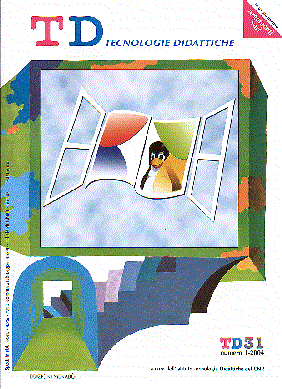The perception of presence and projection of the identity? Blended systems
Main Article Content
Abstract
Article Details
Section
Authors who publish with this journal agree to the following terms:
- Authors retain copyright and grant the journal right of first publication with the work simultaneously licensed under a Creative Commons CC BY 4.0 Attribution 4.0 International License.
- Authors are able to enter into separate, additional contractual arrangements for the non-exclusive distribution of the journal's published version of the work (e.g., post it to an institutional repository or publish it in a book), with an acknowledgement of its initial publication in this journal.
- Authors are permitted and encouraged to post their work online (e.g., in institutional repositories or on their website) prior to and during the submission process, as it can lead to productive exchanges, as well as earlier and greater citation of published work (See The Effect of Open Access)
References
Baym N.K. (1995), The performance of Humour in Computer- Mediated Communication, in ‘Computer-mediated Communication. JCMC’, Vol. 1, No. 2 http:/www.comm.wayne.edu/ NancyBaym.html
Bettini G. (1994), Teoria generale della comunicazione, Franco Angeli, Milano
Calvani A., Rotta M. (2000), Fare formazione in internet, Erickson, Trento
Calvani A. (2001), Educazione, comunicazione e nuovi media. Sfide pedagogiche e cyberspazio, Utet Libreria, Torino
Ceriani C. (2002), Il fenomeno del fake nelle comunità virtuali. Analisi di un caso, tesi di laurea, CdL in psicologia, AA 2001/2002, http://www.iaciners. org/TesiKla/capitolo2.htm
Ciampi A., Corradini M., Larotonda M., Mangione G.R., Nigro S., Pegoraro M., Policaro C. (2002), Bilancio delle competenze, valutazione oggettiva e portfolio. Tre mondi da integrare, un modello per il Master Progettista e gestore della formazione in rete, in Form@re, n. 9/10, marzo-aprile 2002 http://formare.erickson.it/archivio/ marzo_aprile/tre.html
Lévy P. (1997), Il Virtuale, Raffaello Cortina, Milano
Dillenbourg P., Schneider D. (1995), Collaborative Learning and the Internet, http://tecfa. unige.ch/tecfa/research/CMC /colla/iccai95_1.html
Gallino L. (1995), La progettazione di ambienti di apprendimento cyberspaziali, in Ricciardi M., Scrivere, comunicare, apprendere con le nuove tecnologie, Torino, Bollati Boringhieri, http://dns.iqsnet.it/universita/t cf/galliani.htm
Giese M. (1998), Self without body: Textual Self-Representation in an Electronic Community, in First Monday, v. 3 no. 4 http://www.firstmonday.dk/issues/ issue3_4/giese/index.html
Mantovani G. (1995), L’Interazione Uomo-Computer, Il Mulino, Bologna
Mantovani G. (1996), New communication environments. From everyday to virtual, Taylor and Francis, London
McGuire W.J. (1983), A contextualist theory of knowledge, in Berkowitz L. (ed.), Advances in experimental social psychology, 16, Academic Press, New York
Midoro V. (1994), Per una definizione di apprendimento cooperativo, in TD - Tecnologie Didattiche, n. 4 http://www.itd. ge.cnr.it/td/td4/apprend. htm
Murphy K., Mahoney S., Harvell T. (2000), Role of Contracts in Enhancing Community Building in Web Courses http://ifets .ieee.org/periodical/vol_3_20 00/e03.pdf
Preece J. (2002), Comunità online. Progettare l’usabilità, promuovere la socialità, Tecniche Nuove, Como
Pezzullo L..(2000), Comunicazione e costruzione dell’identità nei gruppi telematici, http:// www.sinopsis.it/sinopsis/atticonv/ brescia2000/rpezzu. htm
Rivoltella P.C. (2003), Costruttivismo e pragmatica della comunicazione on line, Erickson, Trento
Wallace P. (2000), La psicologia di internet, Raffaello Cortina, Milano
Rossi P.G. (2001), Ambienti di apprendimento on line, in Form@re, http://formare.erickson. it/archivio/ottobre/1_1edit .html
Rowntree D. (1995), The tutor’s role in teaching via computer conferencing, versione aggiornata per Internet da un articolo pubblicato sul ‘British Journal of Educational Technology’, 26, 3 http://www-iet.open.ac.uk /pp/D.G.F.Rowntree
Stathakos J., Davie L. (2000), Learning Partnerships in the Online Classroom: A collaborative Design Mode http://www.oise. utoronto.ca/~ldavie/
Valiathan P. (2002), Designing a Learning Blended Solution http://www.ksb.niit.com/content/ resources/pdf/Designing% 20a%20Blended%20Learning% 20Solution.pdf
Walther J., Burgoon J. (1992), Relational Communication in CMI, in Human Communication Research, 21, 4, pp. 460-487
Webliografia in lingua inglese sulla CMC: http://www.ibiblio.org/cmc/ http://www.december.com/cmc/ http://www.ascusc.org/jcmc/.

